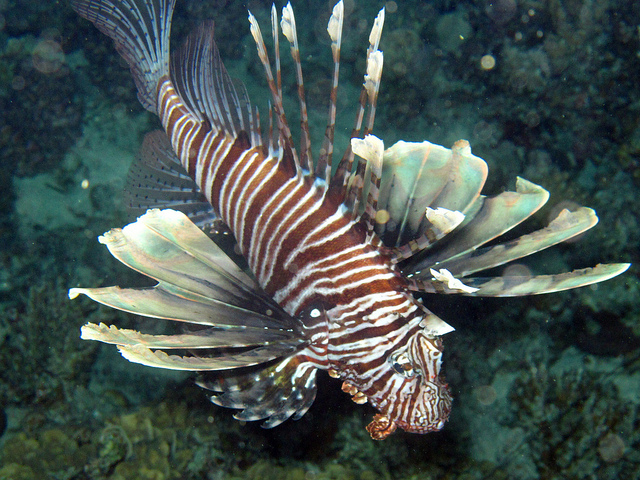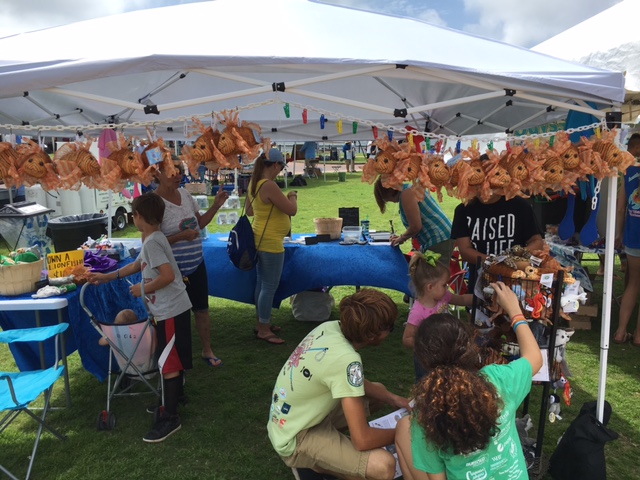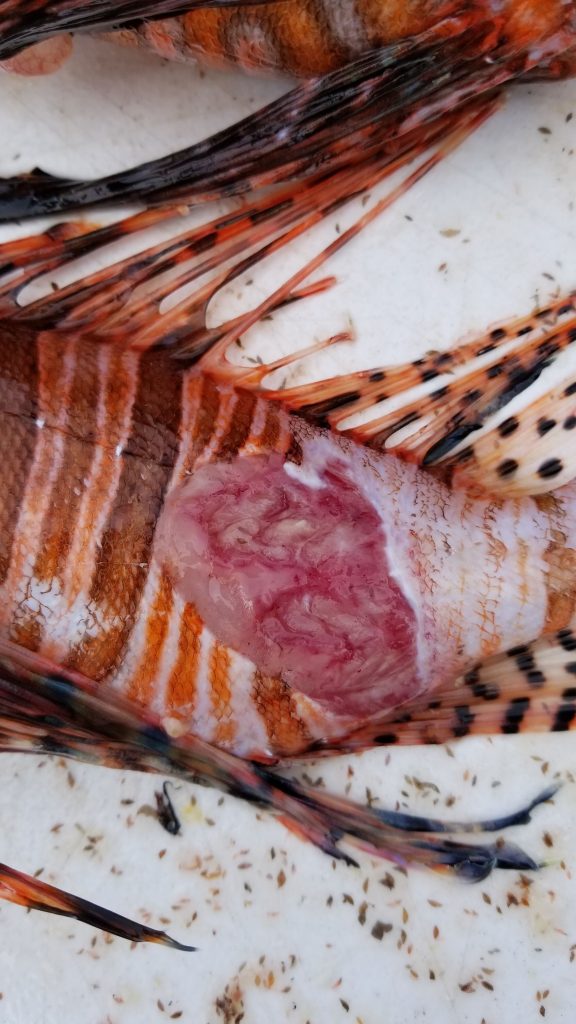Northwest Florida Regional Lionfish Workshop Notes
Feb 8, 2024 – Ft. Walton Beach, Florida
Lionfish first appeared in the northern Gulf of Mexico in 2010. At that time, it was a huge concern – and still is – but it got the public’s attention. Fishermen were concerned that lionfish would deplete targeted species they enjoyed catching and made money from. The number of lionfish divers were encountering was staggering and videos showed reefs that were basically covered with them, and few other species around.
The community reacted by initiating a few local tournaments with awards and prizes and there was a push to harvest them commercially as a food product – lionfish are very good to eat. In 2013 the Florida Fish and Wildlife Conservation Commission and Florida Sea Grant held its first regional workshop to discuss the state of the lionfish invasion in our area and how management efforts were going. It was reported at the time that lionfish densities off the Pensacola area were among the highest in the South Atlantic region. They seemed to have a preference for artificial reefs over natural ones and there were studies suggesting how frequently lionfish removal efforts were needed in order to decrease their population. Studies showed that on reefs where lionfish were abundant, red snapper stayed farther away and further up in the water column. There were several talks on the general biology of the creature – which was still unknown to much of the public.
In 2019 the 2nd regional workshop occurred. The densities of lionfish had declined – possibly due to the commercial and recreational harvest efforts as well as the lionfish tournaments that were occurring. It was at this time that divers began to notice skin lesions on some of the fish and there were questions as to what was causing this and whether it had an impact on their populations. The commercial harvesting had not gone as well as expected primarily due to pricing issues, but education/outreach efforts had made a big impact – almost everyone knew about lionfish and the problems they were causing. Some on the commercial harvest side of the issue had turned to taking visiting divers out to hunt lionfish. For many this was a more lucrative venture than harvest and selling. But people still wanted to eat lionfish and finding local places that served was not easy.
The 3rd Regional Lionfish Workshop was scheduled for 2024 and occurred in February in Ft. Walton Beach. 52 attended to hear presentations on the latest research, commercial harvest, tournaments, and education/outreach efforts. Here are some highlights from those presentations.
Research Updates
- The high densities in 2013 had declined by 2019 but there was no update on current densities of lionfish. Anecdotal evidence from divers suggested that they may be increasing again.
- The source of the skin lesions was still unknown, but some evidence suggested that it could have contributed to the decline of lionfish between 2013-2019. The lesions are still occurring in lionfish.
- eDNA studies by the University of West Florida found lionfish eDNA in samples collected from the upper portions of local estuaries – suggesting they may have entered the bay. The research team also found lionfish eDNA in the feces of some shorebirds nesting in the area. This triggered more questions than answers.
- PCB monitoring in fish tissue obtained from the USS Oriskany as part of the artificial reef permit. The initial target species for this study have declined on the wreck – or at least at not as frequently harvested as the study required. However, lionfish have increased on the reef and are now being used to continue this monitoring project.
Commercial Harvest Updates
- Florida Sea Grant presented results of a regional survey of seafood buyers and restaurants. Few were selling lionfish. Concerns included size and yield from processing, adequate supply, and the fact they were venomous. However, almost all of them were interested in selling lionfish and were willing to learn how to navigate these barriers to make it happen.
Tournament Updates
- The FWC Lionfish Challenge is still going strong, and they plan to continue to support it.
- The Emerald Coast Open is still the largest lionfish tournament in the country. This year they harvested over 18,000 lionfish.
- Overall, across the region and state, lionfish tournaments were on the decline.
- International tournaments reported mixed results – some doing well, some not so well. Those doing well were doing very well.
- A new tournament was kicking off in Pensacola during the fall season – the Pensacola Lionfish Shootout.
Education and Outreach Updates
- Citizen science programs are increasing.
- Many school programs have included lionfish topics within their lesson plans.
Some questions remain unanswered currently.
- Have the densities of lionfish increased or decreased since 2019?
- What is the cause of the skin lesions found on some lionfish?
- Are lionfish inhabiting parts of our estuaries?
- Can we get lionfish on more menus in the region?
The next regional workshop is scheduled for 2029. Until then, many will be involved in trying to answer these questions and manage this problem. If you have any questions concerning the current state of lionfish in our area, please contact your county extension office.
- St. Joe Red Tide Claiming Terrapins - December 15, 2025
- The 2025 Snake Watch Report for the Pensacola Bay Area - December 15, 2025
- Rattlesnakes on Our Barrier Islands; Part 2 – Prey Selection - December 15, 2025



